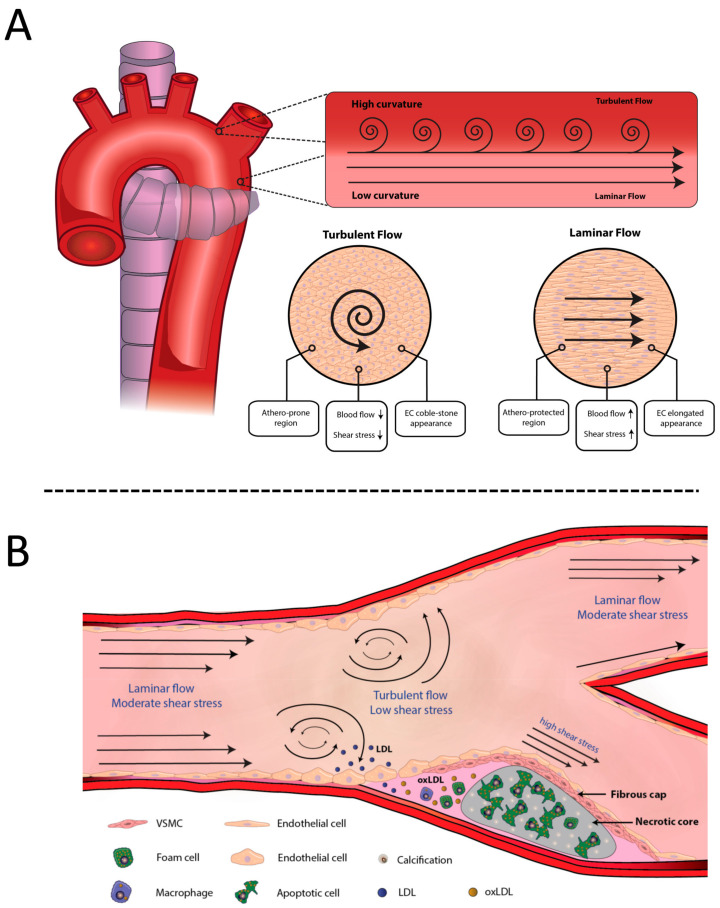Figure 1.
Effect of flow and WSS patterns at arterial bifurcations on atherosclerotic plaque development. (A) In straight vessel segments, physiological WSS with laminar flow leads to ECs and shows a quiescent characteristic flattened shape when flow disturbance occurs. Lower WSS at the outer vessel wall causes ECs to adopt a cobblestone appearance. (B) Turbulent flow occurs at bifurcations and branch points where the arterial curvature is higher due to flow separation. Disturbed laminar flow or turbulent flow reduces WSS and promotes endothelial dysfunction and LDL infiltration, which constitutes the first step of atheroma plaque formation. On the contrary, low curvature areas of the vascular system subjected to higher shear stress are athero-protected.

